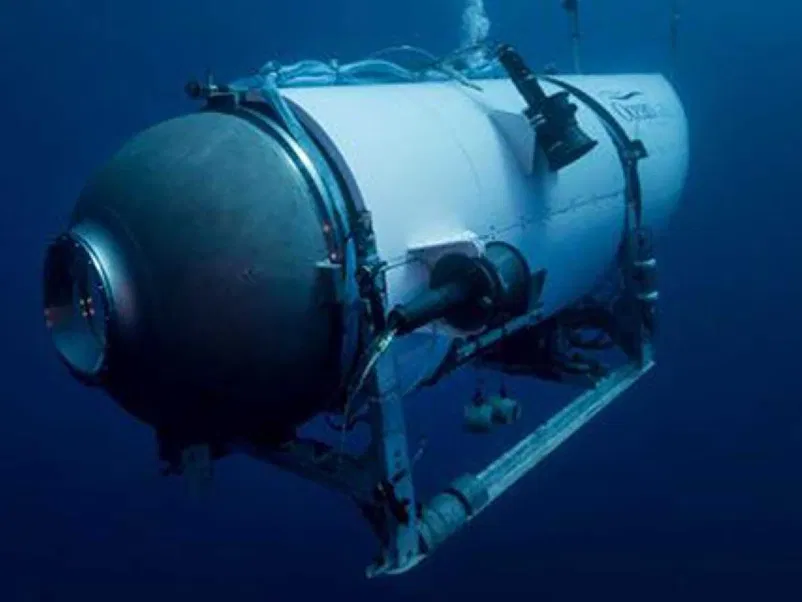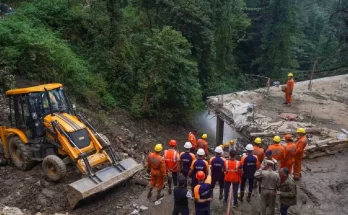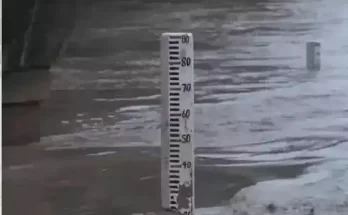Experts say Samudrayaan project follows global safety standards.

File photo Titan submersible (Credit: AP)
New Delhi, June 21: When Titan, the carbon-fibre / titanium submersible by OceanGate Expeditions went missing in North Atlantic Ocean on Sunday, the world yet again realised that humans know more about the space than their own ocean.
Even as modern technology and state-of-the-art equipment are unable to decipher the events at a depth of 6,000 metres, uncertainty continued as there was no news of the Titan submersible by Wednesday, June 21, afternoon.
The accident has lead to a lot of chatter about sub-marine safety, especially when it comes to manned under-sea vehicles and India is no exception to it. India’s ambitious ‘Samudrayaan’ project under the Deep Ocean Mission envisages sending a manned mission deep down to the ocean bed to the depth of 6 kms for exploration of deep-sea resources such as rare earth metals and other minerals.
Currently India is focusing on building a special vehicle, called MATSYA, that will carry three persons to the depth of 500 metres, which the government officials said is on track with an aim of starting the shallow water testing of the manned submersible in the first quarter of 2024.
A mini-submarine type vehicle will have a sphere that will house three scientists and will also have equipment for its launch, emergency response and recovery apart from the regular under-sea vehicles paraphernalia. This vessel will land and explore the sea surface from about 75,000 sq kms under a 15-year contract with International Sea Bed Authority (ISBA).
“While the Titan was (built) purely for adventure purpose, India’s vehicle is for scientific purposes. They have used carbon fibre and Titanium for the crew module while our crew module will be made of a special Titanium alloy,” said Dr G Ramadoss.
Stating that he cannot comment on the safety standards followed by Titan but it was not certified by any international agency on safety issues, Ramadoss said, “We are following the international standards and we are certified by international society. We have triple redundancy for all the systems, so we don’t cut any corners. We don’t want to compromise with human safety.”
The international certification that Ramadoss mentioned is from Norway’s DNV, a private certification firm.
The missing submersible Titan has lost all communication with its owner, a private company. “There are a whole lot of possibilities. In undersea vehicles, even if a small nut-bolt is missing, water ingress is likely and it can sink. Communication is not lost in that case but here in this case, the Titan seems to have lost all communication,” said M Ravichandran, Secretary, Ministry of Earth Sciences (MoES).
Even as concerns are expressed about the availability of oxygen for the five members on board the Titan, experts talked of another possibility of total battery discharge or, even the worst case of the vehicle bursting at that depth.
“The manned mission that we are planning will have something like the planes have a black box. It will pop up to the surface in case there is some exigency,” Ravichandran told News9 Plus.
The Indian submersible MATSYA is looking at different exigencies and being prepared accordingly. First is outside emergency application when the sphere does not respond in designated time, the people on board the ship and the equipment there can trigger it and pull it up.
Second will be a case of inside emergency where, with a change in mass – by release of dead weight – the submersible will float up with the help of higher buoyancy to sea surface level. There are many other ways of emergency is built on the submersible to pop up to the surface.
“In all such cases, the idea is to ensure that the submersible floats up safely to the surface,” Ravichandran said.
Speaking about the material for the product, Ramadoss said, “Some foreign firm had approached us (India) and said if we do it with carbon fibre, it will be much more lighter and much more economical. But we have a national committee to evaluate anything and everything for the manned submersible. It was decided that we go only for a certified and a perfectly safe system.”
Indian Space Research Organization (ISRO), that is known for its state-of-the-art Space Mission vehicles, is tasked with building a Titanium sphere that will carry the three scientists.
“That (Titanium sphere) will take a long time. Till then, what we are doing is build a stainless steel sphere of the same size and fit it with all the same equipment that would be applicable for the Titanium sphere, for the 500 m launch,” he said, and explained that the stainless steel body cannot be used for more than 500 m as it cannot withstand more pressure in the greater depth.
“Currently we are having all the components of a Mercedes Benz but the cover is that of Maruti car,” jokes Ravichandran.
(This story first appeared on news9live.com on Jun 21, 2023 and can be read here.)



